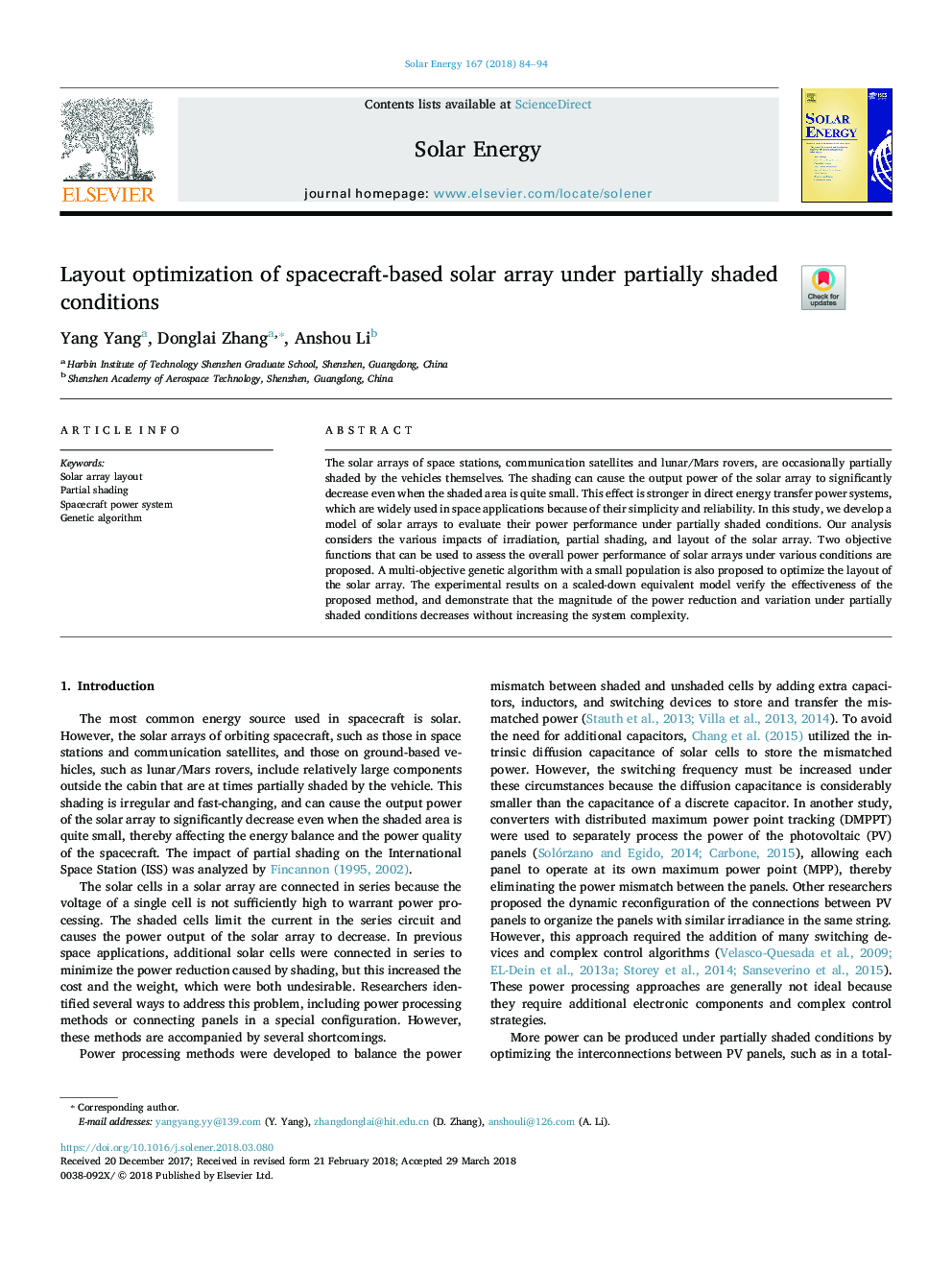| Article ID | Journal | Published Year | Pages | File Type |
|---|---|---|---|---|
| 7935233 | Solar Energy | 2018 | 11 Pages |
Abstract
The solar arrays of space stations, communication satellites and lunar/Mars rovers, are occasionally partially shaded by the vehicles themselves. The shading can cause the output power of the solar array to significantly decrease even when the shaded area is quite small. This effect is stronger in direct energy transfer power systems, which are widely used in space applications because of their simplicity and reliability. In this study, we develop a model of solar arrays to evaluate their power performance under partially shaded conditions. Our analysis considers the various impacts of irradiation, partial shading, and layout of the solar array. Two objective functions that can be used to assess the overall power performance of solar arrays under various conditions are proposed. A multi-objective genetic algorithm with a small population is also proposed to optimize the layout of the solar array. The experimental results on a scaled-down equivalent model verify the effectiveness of the proposed method, and demonstrate that the magnitude of the power reduction and variation under partially shaded conditions decreases without increasing the system complexity.
Keywords
Related Topics
Physical Sciences and Engineering
Energy
Renewable Energy, Sustainability and the Environment
Authors
Yang Yang, Donglai Zhang, Anshou Li,
